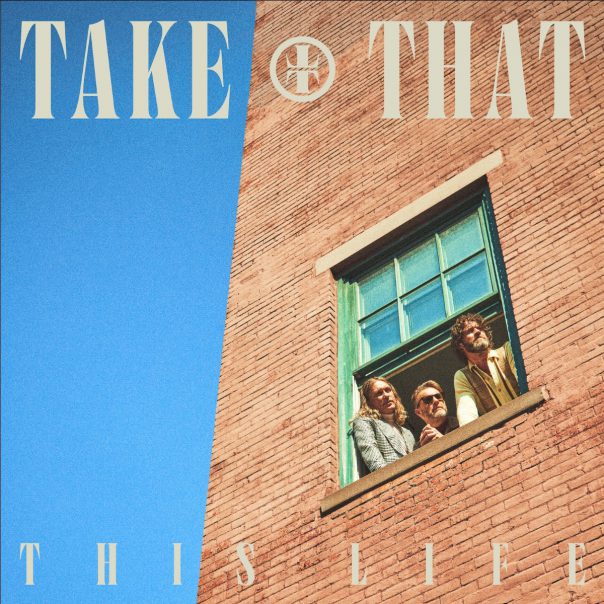ALBUM REVIEW: Take That have more to give in ‘This Life’

Take That, “This Life.”
With or without Robbie Williams, pop group Take That has remained one of the U.K.’s best-selling acts over the years. The one-time quintet, quartet and now trio ruled the charts and drove fans mad over the first half of the ’90s with songs like “Back for Good,” “Never Forget” and “Babe,” until Williams went solo and the group disbanded in 1996. England’s response to New Kids on the Block got back together in the mid-aughts, and it was like they’d never left. Williams, who’d become one of the U.K.’s biggest pop singer-songwriters, even briefly rejoined, before he and Jason Orange departed in 2014.
This Life
Take That
EMI, Nov. 24
7/10
Get the album on Amazon Music.
After that, Take That had three best-selling albums in just four years: 2014’s III and 2017’s Wonderland were certified platinum and gold. A best-of album in 2018 entered U.K. charts at No. 1, proving that demand hadn’t diminished. That brings us to the group’s ninth album and first as a trio of Gary Barlow, Howard Donald and Mark Owen.
The reflective This Life is a lush and kaleidoscopic record filled with poppy guitar and piano hooks. Its modern production (the band recorded at Electric Lady Studios in New York and Nashville’s RCA Studio A) adds a fullness to the Take That sound. You won’t confuse these songs with anything from 1995’s Nobody Else. The vocals are appropriately more mature (and so are the themes), but the harmonies are still velvety.
“The years behind us/ We’ve come so far/ A lovely universe,” the three sing together on album closer “Where We Are,” which sums up the album’s mission statement. Barlow, Donald and Owen aren’t looking at mortality, per se, but there’s a lot of looking backward on This Life.
Downcast album opener “Keep Your Head Up” offers a moody sort of piano melody that’s a bit deceptive to the rest of an album that has plenty of upbeat, happy melodies. The twinkling keys and spacey synths, minus any percussion is a bittersweet doorway as Take That remind listeners to “Keep your head up/ Your mind strong/ Let go instead of holding on.”
On the title track, the trio sing about the challenges life brings and taking advantage of every gift: “This life will take everything that you’ve got/ In this life, there are no second chances …/ Make this life yours.” The message is paired with a poppy piano-led melody.
“March of the Hopeful” has a snare-led marching beat and fully brings in the glossy production with a string section that helps build the momentum, swelling for a euphoric release paired with lyrics like “take a heart and make it better.” It’s paired with pop-rocker “Days I Hate Myself.” The drumming and funky bass line recalls Sting’s on “Don’t Stand So Close to Me” or “Message In a Bottle,” but it supports a synth-pop melody.
The following song, “The Champion,” switches things up again with hushed singing, some hand drumming and a bluesy guitar line. The quick-strummed jamming on “Mind Full of Madness” sounds a bit like Stevie Nicks’ “Edge of Seventeen,” but the song goes in an ethereal direction with its echoing vocals and synth plinks.
Galloping, guitar-led pop rocker “Time and Time Again” offers a similar theme about the passage of time, but it also does it in a sonically unique way. “One More Time” is a much more intimate number with a lone acoustic guitar, strings and singing delivered in an upper register. Rarely on this album does Take That’s sound grow stale. It succeeds in its scope.
Take That has made about 30 songs that reached the top 40 on U.K. charts, 12 of which have reached the top spot. Will This Life return the group to greatness? If history’s taught us anything, it’s not to doubt them.
Follow Roman Gokhman at Twitter.com/RomiTheWriter.
